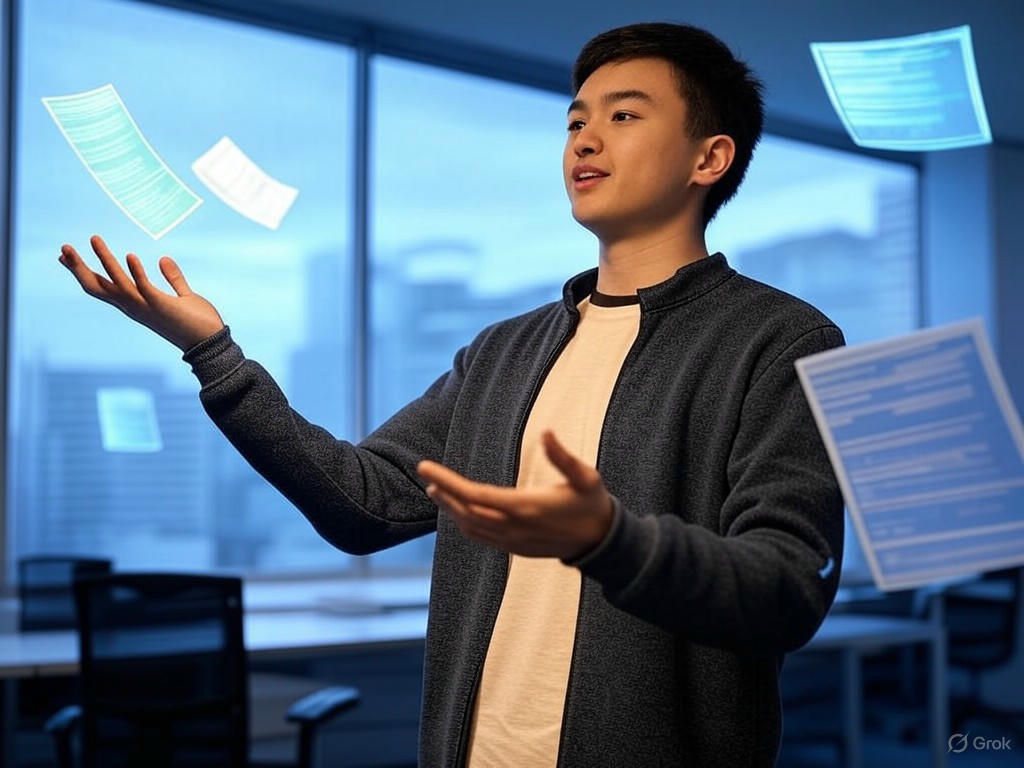
AI for Housing Regulations: DOGE Recruits College Student to Rewrite with AI
The Rise of AI in Housing Regulations
Imagine a world where artificial intelligence streamlines complex government rules overnight—what if that world is already here? The intersection of AI for housing regulations and federal policy is creating ripples across Washington, as Elon Musk’s Department of Government Efficiency (DOGE) brings in a college student to lead a major overhaul at the Department of Housing and Urban Development (HUD). This move, drawing from sources like Eweek, not only highlights AI’s potential to reshape bureaucratic processes but also raises questions about expertise and oversight in modern governance.
At its core, AI for housing regulations involves using smart algorithms to sift through thousands of rules, making this initiative a bold experiment in efficiency. It’s fascinating how quickly technology is evolving to tackle real-world challenges like affordable housing, yet we must weigh the risks against the rewards.
Who Is Driving This AI for Housing Regulations Initiative?
Meet the Unexpected Lead: Christopher Sweet
Step into the spotlight: Christopher Sweet, a third-year undergrad from the University of Chicago, who’s now at the helm of DOGE’s AI efforts. Lacking traditional government experience, Sweet’s background in tech ventures and a student-run hedge fund brings a fresh, innovative edge to AI for housing regulations. His fluency in Portuguese and tech-savvy approach might offer unique insights, but critics wonder if this is the right fit for such high-stakes work, as reported in sources like The Independent.
What’s truly surprising is how Sweet landed this role—it’s a sign of how AI is opening doors for younger talents. Have you ever thought about how a college student’s perspective could shake up an industry that’s been dominated by veterans?
The Bigger Picture: DOGE and Project 2025
This push for change doesn’t stand alone; it’s tied to Project 2025, a conservative plan pushing for widespread deregulation. In the realm of AI for housing regulations, that means targeting areas like climate rules and fair housing protections. DOGE’s strategy aligns with efforts to cut red tape, potentially affecting millions through HUD programs.
Yet, as we dive deeper into AI for housing regulations, it’s clear this context adds layers of political intent. Could this lead to more efficient systems, or might it overlook critical safeguards for vulnerable communities?
How AI Tools Are Transforming Housing Regulations
The Step-by-Step Technical Process
Sweet’s method puts AI front and center, scanning the Code of Federal Regulations (eCFR) to pinpoint outdated or excessive housing rules. This isn’t just about speed; AI for housing regulations helps flag potential overreach by cross-referencing laws, suggesting cuts, and even calculating noncompliance scores. It’s like having a digital assistant that sifts through mountains of text in hours, not months.
For instance, AI generates detailed spreadsheets with recommendations, forcing HUD staff to review and justify any disagreements—a smart way to blend human insight with machine efficiency. In a hypothetical scenario, think of a small town struggling with housing affordability; AI could quickly identify rules to ease that burden.
Targeting Key Areas in Housing
The focus starts with the Office of Public and Indian Housing, which supports over 3.5 million households. Here, AI for housing regulations could mean sweeping changes that impact low-income families and Native American communities directly. According to reports, this approach aims to streamline operations, but it also sparks debate about unintended consequences.
What if AI helps reduce wait times for housing assistance? On the flip side, rushing changes without thorough checks might erode essential protections we’ve built over years.
Innovation vs. Risk: The Debate on AI for Housing Regulations
Why This Could Be a Game-Changer
The perks of AI in housing regulations are hard to ignore. For one, it accelerates the review process, spotting redundancies that could save taxpayers money and time. Efficiency gains like this might inspire other agencies to adopt similar tools, making government operations more agile.
Picture a future where AI for housing regulations cuts through bureaucracy, allowing funds to reach those in need faster. That’s the optimistic view, and it’s backed by examples from tech leaders pushing for modernization.
The Downsides We Can’t Overlook
Of course, not everyone is on board. The main worry is the expertise gap—handing such power to a student raises flags about accountability and experience. Add in concerns over data security, since AI for housing regulations involves sensitive HUD databases, and you have a recipe for potential privacy breaches.
Critics argue this could sidestep democratic processes, leaving out public voices and risking harm to vulnerable groups. As one source in Wired noted, “It all sounds crazy,” but human oversight is key to balancing the equation.
Traditional Methods vs. AI Approaches in Housing Regulations
It’s helpful to compare the old guard with the new when thinking about AI for housing regulations. Traditionally, policy-making involved lengthy reviews and public hearings, ensuring thorough vetting but often at a snail’s pace.
| Traditional Policy-Making | AI-Driven Housing Regulations |
|---|---|
| Relies on expert panels and open consultations | Uses algorithmic analysis for quick, data-driven insights |
| Takes years for revisions | Delivers results in weeks, boosting efficiency |
| Includes detailed impact studies | Flags issues automatically, with staff sign-off |
| Prioritizes transparency through comments | May hide AI’s decision-making, calling for better openness |
This shift highlights how AI for housing regulations could speed things up, but at what cost to accuracy and inclusivity?
Reactions to AI’s Role in Housing Regulations
From tech enthusiasts to political pundits, opinions on AI for housing regulations are all over the map. Supporters see it as a necessary disruption, while others fear it erodes core democratic values. This initiative even spotlights a generational change, with young innovators like Sweet stepping into roles that demand both courage and caution.
Have you noticed how quickly tech is influencing everyday policy? It’s a reminder that we’re all part of this evolving story, whether we’re policymakers or just curious observers.
What’s Next for AI in Housing Regulations?
Expanding the Model Across Government
If this HUD project succeeds, DOGE plans to roll out AI for housing regulations—and similar tools—to other areas like environmental or food safety policies. Advocates tout this as the dawn of algorithmic governance, where data drives decisions more equitably.
Yet, as we explore AI’s broader applications, questions about equity and transparency linger. How do we ensure these systems serve everyone, not just the powerful?
Navigating Ethical Challenges
Key issues include whether AI should influence regulations without deeper human input and how to safeguard against biases. For AI for housing regulations, maintaining oversight is crucial to protect civil rights and public trust.
Consider a tip: If you’re in policy or tech, stay informed by reviewing AI ethics guidelines from reputable sources. That way, you can contribute to smarter, fairer systems.
Wrapping Up: The Path Forward
DOGE’s experiment with AI for housing regulations marks a pivotal shift in how we manage public policy. Whether it leads to greater efficiency or exposes new vulnerabilities, the outcome will shape our approach to governance for years to come.
As you reflect on this, what’s your take—could AI be the key to fixing what’s broken, or do we risk losing sight of human elements? We’d love to hear your thoughts in the comments below, and feel free to explore more on our site for insights into tech and policy. Share this with friends who might find it as intriguing as we do!
References
1. “Undergrad Uses AI to Review HUD Rules.” Eweek. Link
2. “Doge Staffer College AI Rewrite Regulations.” The Independent. Link
3. “Elon Musk’s AI Intern is Rewriting U.S. Housing Laws Without a Degree.” Digialps. Link
4. YouTube video: [Title]. Link
5. YouTube video: [Title]. Link
6. “Feed from Changing Higher Ed.” Link
7. YouTube video: [Title]. Link
8. Harper CE Spring 2019 Course Schedule. Link
AI for housing regulations, DOGE AI initiative, Elon Musk policy changes, HUD AI overhaul, AI policy innovation, regulatory efficiency with AI, housing reform debate, AI governance risks, Christopher Sweet AI role, Project 2025 AI integration





